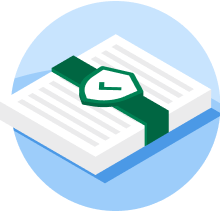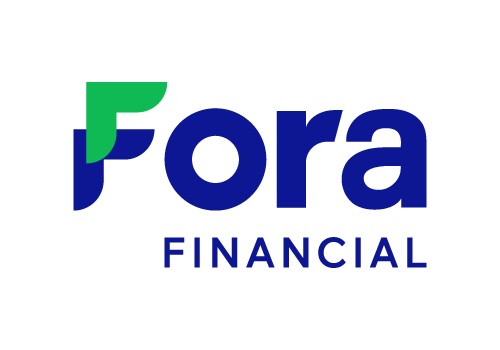Inventory Financing: A Guide for Small Businesses
Inventory financing is a good option for product-based businesses that may not be able to qualify for other loan options.
Many, or all, of the products featured on this page are from our advertising partners who compensate us when you take certain actions on our website or click to take an action on their website. However, this does not influence our evaluations. Our opinions are our own. Here is a list of our partners and here's how we make money.
If your business needs more stock, but lacks the capital to buy it, inventory financing can be a helpful solution. By using your inventory as collateral, you can access funds to restock, prepare for seasonal demand or take advantage of supplier discounts — without putting other assets on the line.
How much do you need?
We’ll start with a brief questionnaire to better understand the unique needs of your business.
Once we uncover your personalized matches, our team will consult you on the process moving forward.
What is inventory financing?
Inventory financing is a small-business loan that helps you buy the products or materials you need to make and sell your goods.
Inventory financing can be easier to qualify for than more traditional loan options — the inventory you buy serves as collateral on the financing, which means you may not have to put up additional business assets to secure the loan.
You can use inventory financing to:
Purchase inventory to prepare for your busy season.
Cover short-term cash flow gaps.
Buy additional stock to meet increased customer demand.
Update product offerings or launch products.
Purchase products in bulk at a discount.
Don’t fit the bill for inventory financing?
How does inventory financing work?




Types of inventory financing
Inventory financing can be structured as term loans or lines of credit. The right option for your business will depend on your specific needs.
Inventory loans
Best for: Large, one-time inventory purchases.
Typical APR: 14% to 99%.
Repayment terms: Six months to seven years.
Funding speed: One day to several weeks, depending on the lender.
How it works: An inventory loan functions like a traditional term loan. You receive a lump sum of capital and pay it back, with interest, over a set period of time. These loans often have higher borrowing amounts and longer repayment terms, making them ideal for big, one-time inventory purchases — like preparing for a busy season or launching a new product line.
Inventory lines of credit
Best for: Ongoing inventory needs.
Typical APR: 10% to 99%.
Repayment terms: Six to 24 months.
Funding speed: Same day to several weeks, depending on the lender.
How it works: An inventory line of credit gives you flexible access to funds that you can tap into as needed. You only pay interest on what you borrow, and once you repay the balance, the funds become available again — similar to the way a credit card works. This makes lines of credit a good option for regular restocking or unpredictable demand.
6 best inventory financing loans
Why trust NerdWallet
| Product | Max loan amount | Min. credit score | Learn more |
|---|---|---|---|
 Fora Financial - Online term loan NerdWallet Rating Apply now with Fundera by NerdWallet | $1,500,000 | 570 | Apply now with Fundera by NerdWallet |
 SBA 7(a) loan Apply now with Fundera by NerdWallet | $5,000,000 | 650 | Apply now with Fundera by NerdWallet |
 Bluevine - Line of credit NerdWallet Rating Apply now with Fundera by NerdWallet | $250,000 | 625 | Apply now with Fundera by NerdWallet |
 OnDeck - Online term loan NerdWallet Rating Apply now with Fundera by NerdWallet | $250,000 | 625 | Apply now with Fundera by NerdWallet |
 iBusiness Funding - Online term loan NerdWallet Rating Apply now with Fundera by NerdWallet | $500,000 | 660 | Apply now with Fundera by NerdWallet |
 Fundbox - Line of credit NerdWallet Rating Apply now with Fundera by NerdWallet | $250,000 | 600 | Apply now with Fundera by NerdWallet |
» MORE: Business loans for bad credit
Pros and cons of inventory financing
Pros | Cons |
✅ Flexible qualification requirements. Because inventory financing is self-collateralizing, you may not need to rely as heavily on your personal credit or time in business to qualify for funding. You may also be able to avoid putting up additional assets as collateral. | ❌ Limited loan amounts. Lenders will typically offer only a percentage of the total cost of the inventory you’re looking to purchase. |
✅ Can benefit sales. This type of financing can help you meet increased customer demand, prepare for a busy season or upgrade a product line — without having to pull from cash reserves to purchase inventory. | ❌ Can be expensive. Business loan rates can be high on this type of financing compared to more traditional loan options. Although newer businesses and those with bad credit can qualify, they may receive particularly high rates. |
✅ Fast and simple application process. If your inventory records are organized, it can be quick and easy to apply for this type of loan, especially when working with an online lender. | ❌ Not all inventory is eligible. To qualify for inventory financing, the products you plan to buy need to be nonperishable, and should hold value for at least the length of your loan. |
How to get inventory financing
1. Review your qualifications
Evaluating your business credentials ahead of time can help you better direct your financing search.Most lenders will use your personal credit score, time in business and annual revenue to underwrite your loan application. For inventory financing, they’ll also consider the value of the inventory you’re looking to purchase, as well as any additional collateral you can offer.
Although banks and credit unions typically provide the most competitive rates and terms, you’ll likely need good credit, strong finances and multiple years in business to get funding. Online lenders, on the other hand, are usually more flexible with their qualification requirements. These lenders may work with startups or borrowers with bad credit — but they’ll charge higher interest rates.
2. Compare inventory financing options
You’ll want to research several inventory financing options to determine which one is the best fit for your business. Compare factors such as:
Repayment terms. Inventory loans often have short repayment terms and may require frequent (daily or weekly) payments. You should make sure that you can afford to repay any potential debt before taking it on.
Interest rates and fees. Inventory financing may be more expensive than traditional bank or SBA loans. You’ll want to ensure that you understand what the rates and fees are and how they’re charged. If a lender quotes interest as a factor rate, it’s helpful to calculate it into an annual percentage rate to get a better sense of the loan cost.
Collateral requirements. Some lenders may require you to secure your loan with additional business assets. You’ll want to double check these types of requirements — and determine if you can meet them — before you apply.
Funding speed. You may be able to get inventory financing from an online lender within 24 hours of approval. Some of these lenders charge higher rates, however, so consider if speed is worth the additional cost.
Using a business loan calculator can help you compare monthly payments, total interest and total loan cost when evaluating lenders.
3. Gather documentation and apply
The business loan application process will vary by lender, but you’ll typically need to provide documentation such as:
Business and personal bank statements.
Business and personal tax returns.
Business financial statements (e.g., profit and loss statement, balance sheet).
Current inventory list.
Sales records and projections.
Lenders may ask for a third-party appraisal to assess the value of the inventory you’re looking to purchase. They may also ask about your inventory turnover and inventory management system.
After you submit your application and receive approval, you may get access to funds as quickly as the same day — depending on your lender. Before signing the business loan agreement, however, you’ll want to review it to make sure the terms and rates are correct, and you’re clear about any penalties or fees.
Alternatives to inventory financing
If you’re having trouble finding or qualifying for inventory financing, there are other options to consider:
Invoice factoring: This type of financing can help B2B businesses cover gaps in cash flow by advancing money on unpaid customer invoices. With invoice factoring, a company purchases your unpaid invoices at a discount, and takes over collecting the money from your customers.
Business credit card: Similar to a line of credit, a business credit card is a revolving line that only charges interest on money you have spent on the card. As you pay down the card, you can spend money on it again.
Purchase order (PO) financing: Similar to inventory financing, purchase order financing is a lump sum of money that can be used to cover cash flow gaps. While inventory financing can be used for general inventory needs, however, PO financing is tied to the needs of a specific purchase order.
Equipment financing. If your business is not inventory-heavy, but you want a self-collateralizing loan option, equipment financing allows you to purchase business equipment and use it to secure your loan.





